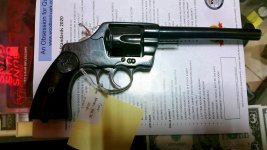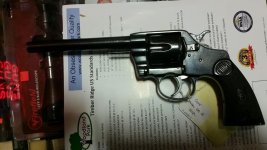OneHorseRanch
Member
HI All!
I'm new at reloading. Reloaded a bunch of .380s and 9mm. All seemed to cycle through my firearms nicely. Now I'd like to reload my .38 Specials. I see in the reloading chart that the powder load minimum is 3, and max is 4grs. The 9mm I can load at max 5grs, both with W231 powder. Just curious why the .38 with a longer cartridge can take a lighter load? I'm sure this is a stupid question for most of you, but I'm hoping there is no such thing as a "stupid question".. so before I get started with these .38s I'd like to know the physics is why it's a lighter load than the 9mm. Thank you. A
I'm new at reloading. Reloaded a bunch of .380s and 9mm. All seemed to cycle through my firearms nicely. Now I'd like to reload my .38 Specials. I see in the reloading chart that the powder load minimum is 3, and max is 4grs. The 9mm I can load at max 5grs, both with W231 powder. Just curious why the .38 with a longer cartridge can take a lighter load? I'm sure this is a stupid question for most of you, but I'm hoping there is no such thing as a "stupid question".. so before I get started with these .38s I'd like to know the physics is why it's a lighter load than the 9mm. Thank you. A


